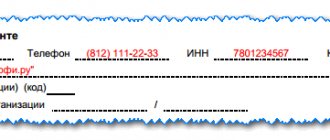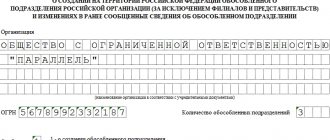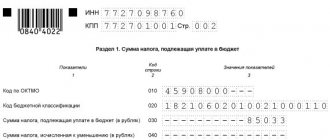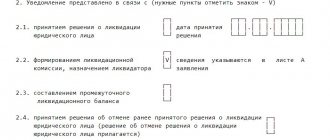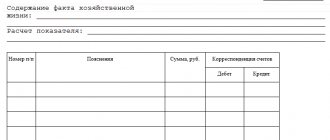Rationale:
- report on the operation of the tower crane (form N ESM-1);
- construction vehicle waybill (form N ESM-2);
- report on the production of a construction machine (mechanism) (form N ESM-3);
- work order report on the operation of the construction machine (mechanism) (form N ESM-4);
- card for recording the operation of a construction machine (mechanism) (form N ESM-5);
- journal for recording the operation of construction machines (mechanisms) (form N ESM-6);
- certificate for payments for work (services) performed (form N ESM-7);
Certificate for payments for work performed (services) according to f.
N ESM-7 is used to make settlements between organizations and customers and to confirm work (services) performed by construction machines (mechanisms). It is compiled in one copy by representatives of the customer and the organization performing the work (services) based on the data from the waybill (form N ESM-2) or reports (forms NN ESM-1, ESM-3). A separate certificate is issued for each report (waybill) for the work of a construction machine (mechanism). The cost of work (services) is indicated in contract prices at which settlements between the customer and the contractor (mechanization department) are made. The specified certificate is certified by the customer's seal and transferred to the accounting department of the organization, which uses it as an attachment to the document issued to the customer for payment.
https://www.youtube.com/watch?v=ytpolicyandsafetyru
Based on the meaning of the last phrase, we can conclude that ultimately the certificate for settlements remains with the organization that provided the crane services. However, it is known that in practice, most often a certificate for payments for work (services) performed in Form N ESM-7, certified by the customer’s seal, is attached to the document that the contractor issues to the customer for payment. In this case, payment documents are an invoice and a certificate for work (services) performed.
It should also be noted here that from January 1, 2013, the forms of primary accounting documents contained in the albums of unified forms of primary accounting documentation are not mandatory for use. The organization has the right to develop the form of the primary document independently and apply it, the main thing is that it contains all the required details (Part 2 of Article 9 of Law No. 402-FZ).
Noskov A.A.,
professional support line expert
This material is a response to a private request and may lose its relevance due to changes in legislation.
Procedure for filling out waybills
Magazine "Accounting Vesti" (St-Pb) No. 3 January 2007 If waybills are filled out incorrectly, the organization's expenses for the purchase of fuels and lubricants may not be recognized during a tax audit.
Magazine "Accounting News" (St. Petersburg) No. 3 January 2007
If waybills are filled out incorrectly, the organization's expenses for the purchase of fuels and lubricants may not be recognized during a tax audit.
In accounting according to clause 2 of Art. 9 of the Law of November 21, 1996 No. 129-FZ “On Accounting” (hereinafter referred to as Law No. 129-FZ), primary accounting documents are accepted for accounting if they are drawn up in the form contained in the albums of unified forms of primary accounting documentation, and documents whose form not provided in these albums, must contain the following mandatory details:
a) name of the document;
b) date of preparation of the document;
c) the name of the organization on whose behalf the document was drawn up;
d) content of the business transaction;
e) measures of business transactions in physical and monetary terms;
f) the names of the positions of the persons responsible for the execution of the business transaction and the correctness of its execution;
g) personal signatures of these persons.
Unified forms of waybills
Waybills are primary accounting documents confirming expenses incurred for fuels and lubricants (hereinafter referred to as fuels and lubricants).
In case of incorrect filling out of waybills, the organization’s costs for the purchase of fuels and lubricants, accepted as material expenses in accordance with subparagraph. 5 p. 1 art. 254 of the Tax Code of the Russian Federation (hereinafter referred to as the Tax Code of the Russian Federation), or as expenses for the maintenance of official transport in accordance with subparagraph. 11 clause 1 art. 264 of the Tax Code of the Russian Federation may not be recognized by tax authorities during an on-site tax audit.
Unified forms of waybills were approved by Goskomstat Resolution No. 78 dated November 28, 1997 “On approval of unified forms of primary accounting documentation for recording the work of construction machines and mechanisms, work in road transport” (hereinafter referred to as Goskomstat Resolution No. 78 dated November 28, 1978).
In total, eight unified forms of waybills have been approved for legal entities of all forms of ownership carrying out activities related to the operation of construction machines or motor vehicles.
For recording the operation of construction machines and mechanisms:
- construction vehicle waybill (form No. ESM-2)
For accounting of work in road transport:
- waybill for a passenger car (form No. 3);
- waybill for a special vehicle (form No. 3special);
- passenger taxi waybill (form No. 4);
- waybill for a truck (form No. 4-C);
- waybill for a truck (form No. 4-P);
- bus waybill (form No. 6);
- waybill for a non-public bus (form No. 6 special).
For individual entrepreneurs operating vehicles on the basis of ownership, lease (or other legal grounds), when they carry out transportation activities on a commercial basis, as well as at their own expense for production purposes, by Order of the Ministry of Transport of the Russian Federation dated June 30, 2000 No. 68 “On the introduction of travel documentation for individual entrepreneurs carrying out transportation activities by road transport" (as amended on September 22, 2003), the following forms of waybills have been approved:
- waybill for a truck of an individual entrepreneur (form No. PG-1);
- waybill for an individual entrepreneur’s bus (form No. PA-1);
- waybill for a passenger car of an individual entrepreneur (form No. PL-1).
Passenger car waybill
Let's look at the procedure for filling out a waybill using the example of one of the most common forms of waybills used in an organization - “Passenger car waybill (form No. 3).
The waybill for a passenger car is the primary document for recording the operation of passenger vehicles and the basis for calculating wages to the driver.
A waybill is issued in one copy by the dispatcher or another person authorized by the head of the organization.
According to the Instructions for the use and completion of forms approved by the Resolution of the State Statistics Committee of the Russian Federation dated November 28, 1997 No. 78 (hereinafter referred to as the Instructions for the application and completion of forms), a waybill for a passenger car is issued only for one day or shift. The next waybill is issued taking into account the delivery of the driver’s waybill for the previous day of work. For a longer period, it is issued only in the case of a business trip when the driver performs a task for more than one day (shift).
At the same time, the Ministry of Finance of Russia in its Letters dated 09.20.05 No. 03-03-04/1/214, dated 02.20.06 No. 03-03-04/1/129, dated 03.16.06 No. 03-03-04/ 2/77 and dated 04/07/06 No. 03-03-04/1/327 explained that the unified form No. 3 “Passenger car waybill” is mandatory only for motor transport organizations. Other organizations can independently develop the form of a waybill or other document confirming expenses incurred in the form of fuel and lubricants, which must reflect all the mandatory details provided for in paragraph 2 of Art. 9 of Law No. 129-FZ.
An independently developed form of waybill must be recorded in the accounting policy, in accordance with the requirements of clause 5 of PBU 1/98 “Accounting Policy of the Organization”, this is also indicated by the Letter of the Federal Tax Service of the Russian Federation for Moscow dated November 13, 2006 No. 20-12/100253 .
In the Letter of the Ministry of Finance of the Russian Federation dated March 16, 2006 No. 03-03-04/2/77, it was noted that if the weekly (monthly, quarterly) preparation of waybills makes it possible to organize the accounting of time worked by the driver and fuel consumption, then the waybill, compiled with such frequency and accompanied by cash receipts reflecting the purchase of fuel and lubricants, can confirm the above-mentioned expenses of the taxpayer.
In accordance with the Instructions for the use and completion of forms, when filling out a waybill, the serial number, date of issue, stamp and seal of the organization that owns the car must be affixed.
The issuance of processed waybills to the driver and their delivery to the accounting department is recorded in a special journal for recording the movement of waybills (form No. approved by Resolution of the State Statistics Committee dated November 28, 1997 No. 78.
approved by Resolution of the State Statistics Committee dated November 28, 1997 No. 78.
The dispatcher, or a person authorized by the head of the organization, indicates in the appropriate columns:
- name, address and telephone number of the organization;
- make and license plate number of the car;
- FULL NAME. driver, driver's license number and class.
When an organization carries out licensed types of transportation, the corresponding data is filled in in the “License Card” line. If there are no licensed types of transportation, the line is crossed out.
In the “Assignment to the driver” section, the dispatcher indicates which unit is receiving the vehicle and the destination address.
In the columns “Time of leaving the garage” and “Time of returning to the garage” the corresponding time is indicated, and this data is certified by the signature of the dispatcher.
In the columns “Speedometer readings” and “Speedometer readings when returning to the garage,” the organization’s mechanic indicates the number of kilometers traveled according to the speedometer data, respectively, at the time of leaving the garage and when returning the car to the garage. The number of kilometers traveled according to the speedometer readings when returning to the garage must correspond to the speedometer readings when leaving the garage on the next day (shift) of the car’s operation.
The mechanic of the organization, when leaving the car from the garage and accepting it when returning to the garage, puts his signature on the waybill.
If the organization does not have a mechanic on staff, the technical inspection of the car when leaving and returning to the garage can be carried out by a person authorized by the head of the organization who has the appropriate qualifications.
The driver, in the line “Received the car in technically sound condition,” must certify the acceptance of the car with his signature. The driver also indicates in the corresponding line on the waybill the marks associated with lateness, waiting time, downtime on the way, entry into the garage, and others. When returning to the garage and returning the car, the driver also puts his signature, certifying the data indicated in the waybill.
In the “Fuel Movement” section you must indicate:
- remaining fuel upon departure and return;
- normal and actual fuel consumption;
- the amount of fuel dispensed according to the refueling sheet.
Standard fuel consumption is determined based on fuel consumption standards approved by order of the head of the organization.
When calculating fuel consumption rates, one should be guided by the Guiding Document R3112194-0366-03 “Consumption Norms of Fuel and Lubricants in Road Transport”, approved by the Ministry of Transport of the Russian Federation on April 29, 2003 (hereinafter referred to as the Guiding Document of the Ministry of Transport of the Russian Federation). If a specific make or model is not included in the Guidelines of the Ministry of Transport of the Russian Federation, it is necessary to be guided by the vehicle fuel consumption characteristics specified by the manufacturer of that make or model.
According to the Guidelines of the Ministry of Transport of the Russian Federation, the fuel consumption rate can increase or decrease depending on the operating conditions of the vehicle (time of year, service life of the vehicle, use of air conditioning, locality, etc.).
Calculation of standard fuel consumption per day (shift)
| Standard fuel consumption, l | = | Vehicle mileage per day (shift), km | X | Fuel consumption rate per 100 km. mileage, liter | : | 100 |
Example 1
Let's consider, using the example of a VAZ-21099 car, the calculation of standard fuel consumption per day (shift). Let's take the day of operation of the car as January 15, 2007. The mileage per working day (shift) was 150 km.
In accordance with the Guidelines of the Ministry of Transport of the Russian Federation, the basic fuel consumption for a VAZ-21099 car is 7.7 liters per 100 km. Taking into account the operation of the car in winter, as well as in the city of Moscow (population of more than 3 million people), the basic fuel consumption increases by 10% and 25%, respectively.
If it is necessary to apply several surcharges simultaneously, the fuel consumption rate is set taking into account the sum or difference of these surcharges.
From here:
- Fuel consumption rate per 100 km = 7.7 l + (7.7 l x (0.10 + 0.25) = 10.4 l
- Standard fuel consumption = 150 km x 10.4 l: 100 = 15.6 l
Calculation of actual fuel consumption per day (shift)
| Actual fuel consumption, l | = | Remaining fuel at departure, l | + | Amount of additional fuel, l | — | Remaining fuel upon return, l |
Example 2
Fuel remaining at departure – 5 liters.
The amount of additional fuel filled is 21 liters.
The remaining fuel upon return is 11 liters.
- Actual fuel consumption = 5 l. + 21 l. – 11 l. = 15 l.
On the reverse side of the waybill, in the appropriate columns, fill in:
- place of departure and destination;
- time of departure and time of return of the car;
- the number of kilometers traveled along the corresponding routes.
It should be noted that both in the unified form and in the independently developed form of the waybill, information about the specific location of the vehicle is mandatory. Otherwise, a waybill that does not contain information about the vehicle’s destination does not confirm the taxpayer’s expenses for the purchase of fuel and lubricants. This position is set out in the Letter of the Ministry of Finance of the Russian Federation dated February 20, 2006 No. 03-03-04/1/129, as well as in the Letter of the Federal Tax Service of the Russian Federation for Moscow dated November 13, 2006 No. 20-12/100253.
In the section “Result of vehicle operation for a shift”, in the column “total in work order” the number of hours of operation of the car per day (shift) is indicated, in the column “passed” - the mileage of the car with the difference between the speedometer readings when leaving the garage and the speedometer readings when returning to garage per day (shift).
The “Payroll calculation” section is filled out by the organization’s accountant in the case of a piecework or time-based payment system for the driver.
If the driver has a piece-rate wage system, then the amount of accrued wages is reflected in the “per kilometer” column.
If the driver has a time-based wage system, then the amount of accrued wages is reflected in the “per hour” column.
In the line “Calculation made”, the accountant indicates his position, signs and deciphers the signature.
Pre-trip medical examination
It should be noted that in accordance with Art. 213 of the Labor Code of the Russian Federation (hereinafter referred to as the Labor Code of the Russian Federation), workers engaged in work related to traffic undergo mandatory preliminary (upon entry to work) and periodic (for persons under the age of 21 - annual) medical examinations (examinations) to determine the suitability of these workers to perform the assigned work and prevent occupational diseases. In accordance with medical recommendations, these employees undergo extraordinary medical examinations (examinations).
The list of works during which preliminary and periodic medical examinations (examinations) are carried out is approved by Order of the Ministry of Health and Social Development of Russia dated August 16, 2004 No. 83. By Order of the Ministry of Health and Social Development of the Russian Federation dated May 16, 2005 No. 338, work on direct driving of a vehicle was additionally included in this list.
Article 20 of the Federal Law of December 10, 1995 No. 196-FZ “On Road Safety” imposes on employers the obligation to organize and conduct pre-trip medical examinations of drivers with the involvement of health officials.
Provided by Art. 213 of the Labor Code of the Russian Federation, medical examinations (examinations) are carried out at the expense of the employer, this is indicated in the Letter of the Ministry of Finance dated July 14, 2006 No. 11-08-15.
It follows that all legal entities and individual entrepreneurs that operate vehicles (regardless of their total number) are required to organize, at their own expense, pre-trip medical examinations of drivers.
Methodological recommendations for conducting pre-trip medical examinations of drivers are given in Letter of the Ministry of Health of Russia dated August 21, 2003 No. 2510/9468-03-32.
A pre-trip medical examination is carried out before the start of a driver's work shift. For its implementation, the employer must allocate a special room. The organization of pre-trip medical examination of drivers is under the control of the employer and the methodological guidance of the medical institution.
Drivers of motor vehicles must appear for a pre-trip medical examination with a waybill.
The results of the pre-trip medical examination must be entered into the journal. The journal must be numbered, laced, and sealed with the seal of the organization or healthcare institution. The log records the surname, first name, patronymic, age, place of work of the driver, date and time of the examination, conclusion, measures taken, surname and initials of the medical worker.
Failure to fulfill obligations to organize a pre-trip medical examination of drivers may result in the application of administrative or criminal penalties to employers and their officials.
Considering that the organization and conduct of pre-trip inspections of drivers are classified as labor protection measures, failure to carry out these measures entails liability for the employer’s officials in accordance with Art. 5.27 of the Code of Administrative Offenses of the Russian Federation (CAO RF) in the form of a fine from 5 to 50 minimum wages (minimum wage), for legal entities - from 300 to 500 minimum wage.
Violation of labor safety rules, which resulted in serious harm to human health or death, is a criminal offense (Article 143 of the Criminal Code of the Russian Federation).
An example of filling out a waybill for a passenger car (form No. 3)
Place for stamp Standard interindustry form No. 3
organization Approved by a resolution of the State Statistics Committee of Russia
from 28.11.97 No. 78
| L |
| 1 |
TRAVEL SHEET FOR A PASSENGER CAR __________ No. ___________
series
“_ 15 _” January ______ 2007 _
| Code | |||
| OKUD form | 0345001 | ||
| Organization | Torgsnab LLC, Moscow, Mira Ave., 10, tel. (495) 322-22-33 | according to OKPO | 50030165 |
name, address, telephone number
| car model | VAZ-21099 | |||||
| State license plate | A 101 VB 77 | Garage number | — | |||
| Driver | Sidorov Alexander Vasilievich | Personnel Number | 15 | |||
Full Name
Certificate No. ___________________________ 500327 __________________ Class __________ B __________
License card standard, limited
| — |
| — |
cross out what is unnecessary
| — |
Registration No. ____________________ Series ______________________ No. ______________________________
Assignment to the driver: The car is technically sound
| LLC "Torgsnab" |
Speedometer readings, km
10511At the disposal of _______________________________________________
nameDeparture allowed
| administration | Mechanic | Petrov | Petrov D.K. |
organization signature decryption of signature
| Sidorov |
| Moscow, st. Zemlyanoy Val, 23 |
The vehicle was received in good technical condition
| Sidorov A.V. |
Delivery address ________________________________________________ Driver _____________ _________________________________
signature signature decryption
| Fuel | brand | code | ||
| Time to leave the garage, h. min. | AI-92 | — | ||
| 10:00 a.m. | ||||
| Kuznetsov |
Fuel movement
| Kuznetsov A.D. |
Dispatcher-contractor _______________ ________________________
| signature signature decryption | quantity, l | ||||||||
| Issued by: | |||||||||
| Return time to garage, hours min | 18:00 | by gas station | |||||||
| Dispatcher-contractor | Kuznetsov | Kuznetsov A.D. | sheet no. | 21 | |||||
| signature signature transcript Balance: upon departure | 5 | ||||||||
| upon return | 11 | ||||||||
| Delays, waiting, downtime, visits to the garage and others Consumption: according to the norm | 15,6 | ||||||||
| marks | actually | 15 | |||||||
| Lunch from 13:00 to 14:00 | Saving | 0,6 | |||||||
| Overspending | — | ||||||||
The car was handed over. The car was accepted. Sleep readings
| Sidorov A.V. |
| Sidorov |
driver _____________ _______________________ meter when returning to the garage, km
| 10661 |
signature signature decryption
| Petrov |
| Petrov D.K. |
M.P. Mechanic _____________ __________________________
signature signature decryption
Reverse side of form No. 3
| Number in order | Customer code | Place | Time | Traveled, km | Signature of the person using the car | ||||
| departures | appointments | departure | returns | ||||||
| H | min | h | min | ||||||
| 1 | — | Mira pr., 10 | st. Zemlyanoy Val, 23 | 10 | 00 | 11 | 00 | 25 | Sidorov |
| 2 | — | st. Zemlyanoy Val, 23 | St. Shukhova, no. 5 | 11 | 00 | 13 | 00 | 50 | Sidorov |
| 3 | — | St. Shukhova, 5 | Etc. Mira, 10 | 14 | 00 | 18 | 00 | 75 | Sidorov |
Result of vehicle work per shift: Payroll calculation:
| just dressed up, h | 7 | per kilometer, rub. cop | — |
| passed, km | 150 | for hours, rub. cop | 397 rub. 74 kopecks |
| Total, rub. cop | 397 rub. 74 kopecks | ||
| Tikhonova S.P. |
| Tikhonova S.P. |
| Chief Accountant |
The calculation was made by _________________________ ___________________________ __________________________________________
position signature transcript of signature
Documents used in this article:
- Tax Code of the Russian Federation (part two) dated 05.08.00 No. 117-FZ (adopted by the State Duma of the Federal Assembly of the Russian Federation on 19.07.00).
- Federal Law of November 21, 1996 No. 129-FZ “On Accounting” (adopted by the State Duma of the Federal Assembly of the Russian Federation on February 23, 1996). In ed. from 03.11.06.
- Resolution of the State Statistics Committee of the Russian Federation dated November 28, 1997 No. 78 “On approval of unified forms of primary accounting documentation for recording the work of construction machinery and mechanisms, work in road transport.”
- Order of the Ministry of Transport of the Russian Federation dated June 30, 2000 No. 68 “On the introduction of travel documentation for individual entrepreneurs carrying out transportation activities in road transport.” In ed. from 09/22/03.
- “Consumption standards for fuels and lubricants in road transport (R 3112194-0366-03)” (approved by the Ministry of Transport of the Russian Federation on April 29, 2003).
- Order of the Ministry of Health and Social Development of the Russian Federation dated August 16, 2004 No. 83 “On approval of lists of harmful and (or) hazardous production factors and work, during which preliminary and periodic medical examinations (examinations) are carried out, and the procedure for conducting these examinations (examinations).” In ed. from 05.16.05.
Federal Law No. 196-FZ dated December 10, 1995 “On Road Traffic Safety” (adopted by the State Duma of the Federal Assembly of the Russian Federation dated November 15, 1995). In ed. dated 12/18/06.
List of forms of primary accounting documentation
| Form number | Form name | Format | Page |
| Report on the work of a tower crane | A4 | 13 | |
| Construction vehicle waybill | 1/6d.l. | 15 | |
| Report on the operation of a construction machine (mechanism) | 1/6d.l. | 17 | |
| Work order report on the operation of a construction machine (mechanism) | 1/6d.l. | 19 | |
| Card for recording the operation of a construction machine (mechanism) | A4 | 21 | |
| Logbook for the operation of construction machines (mechanisms) | 2A4 | 23 | |
| Help for payments for work performed (services) | A5 | 26 | |
| Passenger car waybill | A5 | 27 | |
| Waybill for a special vehicle | A4 | 29 | |
| Taxi waybill | A4 | 31 | |
| Truck waybill | A4 | 33 | |
| Truck waybill | A4 | 35 | |
| Bus waybill | A4 | 37 | |
| Waybill for a non-public bus | A4 | 39 | |
| Logbook for the movement of waybills | A4 | 41 | |
| Consignment note | A4 | 43 |
